2025 TESA Nominee Profile: Alberta—John Smith and Laura Laing, Plateau Cattle Co.
- CCA

- Aug 20, 2025
- 8 min read
Management geared to optimize beef production while protecting the environment
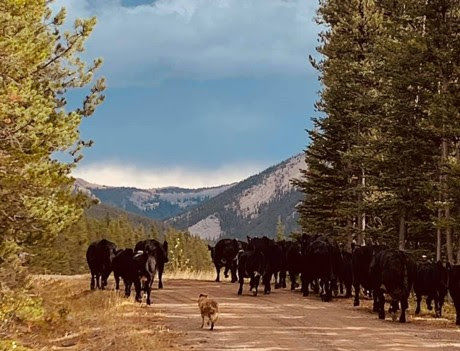
For the owners of Plateau Cattle Co. in southern Alberta, applying the best management practices to raise cattle and doing their best to protect, maintain and enhance the environment is a seamless affair.
John Smith and his wife Laura Laing, who are the third generation on the 450-head commercial cow-calf operation based west of Nanton, about an hour south of Calgary, look for efficient genetics in their cattle and pay particular attention to applying a wide range of animal welfare practices all geared toward optimizing beef production.
At the same time, they apply recognized range management principles on their deeded land as well on community pastures and crown land grazing leases—that’s especially important as they manage their way through several consecutive years of drought. They do their best to enhance and protect water resources, pay attention to protecting wildlife habitat, and welcome opportunities to educate the public about the value and importance of the natural resources along the eastern slopes of the Rocky Mountains.
“For us, doing our best to work with nature and protect the environment goes hand in hand with our objective to run an efficient cow-calf operation that produces high quality beef,” says John.
Picture Credit: Alberta Beef Producers (Left and Middle) and Plateau Cattle Co. (Right)
“It is important that everyone appreciates the value of native grasslands and water resources,” says Laura. “It’s not just important to the livelihood of the ranching community that directly uses these resources, but also to the livelihood of dozens of communities and thousands of people across southern Alberta. If these resources aren’t carefully managed and protected, it will have a tremendous negative impact that will affect several generations to come.”
Their commitment to properly managing land and water resources which contribute to a sustainable ranching operation earned Plateau Cattle Co. recognition as the Alberta Beef Producers nominee for The Environmental Stewardship Award 2025.
“It is an honour to be recognized and to receive this prestigious award. We are humbled to have been nominated by mentors and awarded amongst peers,” says Laura. “We apply these best management practices simply because it is the right thing to do. Looking after the environment and raising quality cattle has always been the foundation and heart of this generational operation. We carry that legacy with great care, pride and determination in our stewardship to do our best so this range and native grasslands thrive for the next generation.”
The ranch was started by John’s maternal grandparents, John and Shirley Hay in 1959, who were long involved in raising purebred Hereford cattle. Their daughter Serena and husband Dan Smith carried on as the second generation operating Smith/Hay Herefords until 2016 when their son John and wife Laura took over the ranch, renaming it Plateau Cattle Co. after the nearby Plateau Mountain range.
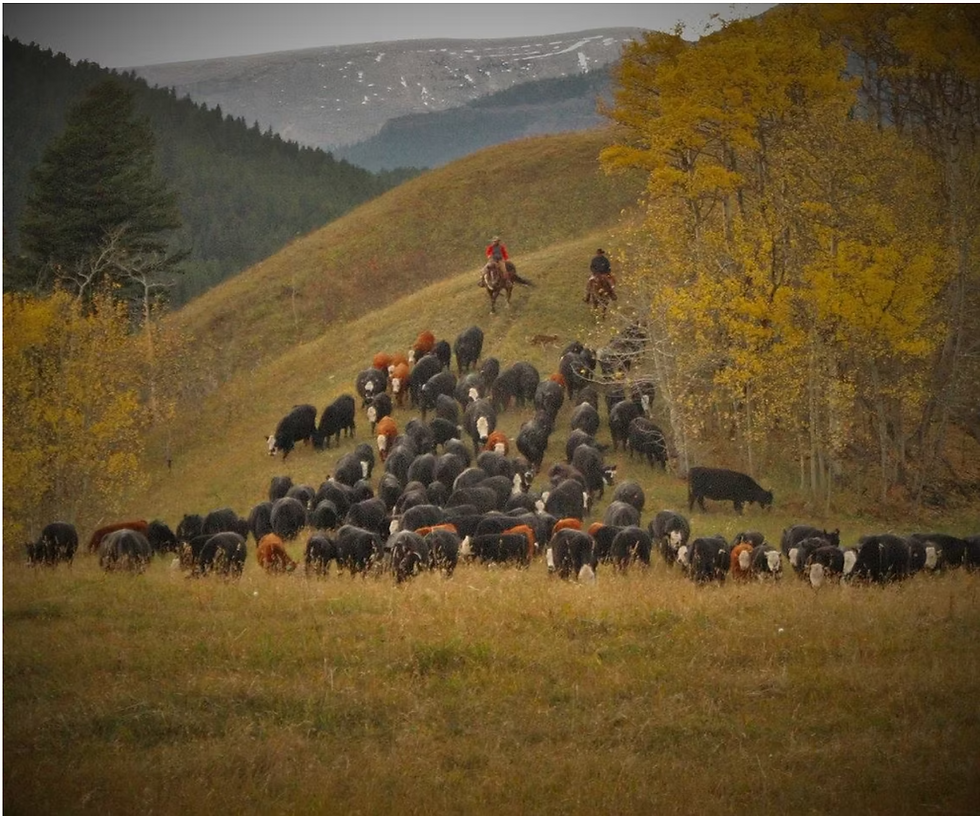
Along with the home place that includes about 1,200 acres of mostly pasture and hay land, they also have a crown land grazing lease in the Mount Livingstone Range and are shareholders and board members of the Spruce Grazing Co-op and the Waldron Grazing Cooperative, located in the foothills south and west of the ranch headquarters. John’s grandfather was one of the founders of the Waldron Grazing Cooperative, which, at about 88,000 acres, is one of the largest and most respected grazing co-operatives in North America. John is currently Vice-Chair of Waldron Grazing Co-operative and former vice-chair of Spruce Grazing Co-op.
With a herd today of about 450 head, Plateau Cattle Co. focuses on producing efficient and functional Black Angus and Black Angus cross mother cows that are genetically well suited to thrive on timbered and open range native grass pastures.
Picture Credit: Plateau Cattle Co.
“We’ve paid particular attention over the years to apply proper animal welfare production practices and low-stress cattle handling practices, which all helps to produce a healthy and efficient beef herd,” says John. From the development of thoughtful handling facilities, an openness to continued learning, and participation in scientific research and stress management trials for the betterment of not only their operation but the industry as well, Laura and John are on a relentless pursuit of low stress handling, stockmanship and stewardship. In 2023, John earned the title of Ultimate Stockmanship Challenge Champion.
“In addition to stockmanship we apply proper management of forage and water resources over our grazing land, not only to benefit our grazing operation but to benefit the environment and all that rely upon it as well,” says Laura. “Applying these best management practices allows us to optimize beef production. Our genetic DNA approach strives to support genetic efficiencies that support lower inputs, higher gain and exceptional beef quality, something that is proven from field to plate in our carcass data.”
Picture Credit: Paula Campbell
And with calves marketed through two quality beef programs—Benchmark Angus based near Warner, AB and Trails End Beef based near Nanton, AB—proper production practices are important.
“Our beef is going into quality value-added programs landing on the plates of many top restaurants throughout Alberta, where consumers want to know how this beef was raised,” says Laura. “We are proud to be able to tell our story about how we raise our cattle with care under humane and low stress production practices, in a grazing system designed to protect and hopefully enhance the natural resources. Our whole production system is not only the right thing to do but also has sound economics as well.”
Plateau Cattle Co. has over the years implemented a wide range of best management practices for cattle and range resources all geared to improve production efficiency.
With the beef herd for example, they installed a Bud Williams-inspired handling system to improve safety and reduce stress on cattle. From birth, techniques like tactile stimulation are used in a form of calf massage. Working alongside Olds College in a three-year trial project, the massage helps mimic the mother cows' care and stimulation of the flanks and shoulders—helping the calf’s first experience with human handling and stress response. This tactile stimulation is proving less sickness in calves—improved gains and overall herd health and potentially safer handling in the future should they be retained for the future breeding herd.
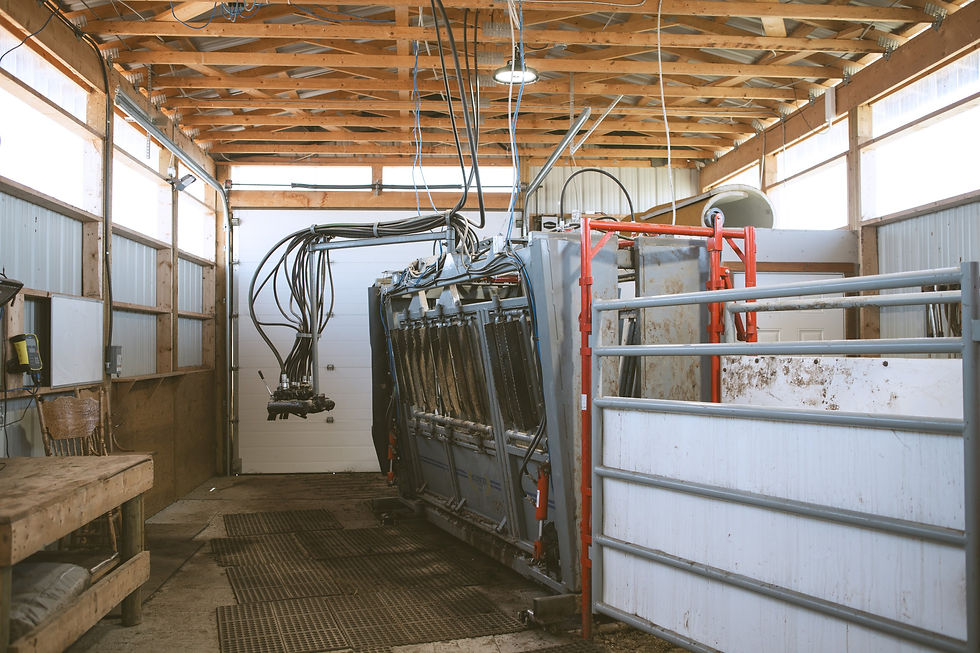
Pursuing continued opportunities for lowering stress response and higher gains, Laura and John no longer use hot-iron branding on their calves. John and Laura agree with case studies showing higher gains in calves that did not undergo traditional hot branding methods. In their first year without branding they noted 18–21 pounds more gain per head in their calf crop. They have also designed and installed custom mats that fit inside the squeeze chute, providing a calming effect for calves as they are restrained during spring processing.
They work closely with industry leaders and their animal health providers, Veterinary Agri-Health Services of Airdrie, as well as researchers at Olds College, remaining open to any research and/or progressive ideas to implement on their operation and keep current on technology and practices that enhance herd health and performance. (In fact, it was Veterinary Agri-Health Services that nominated Plateau Cattle Co. to ABP as candidates for TESA.)
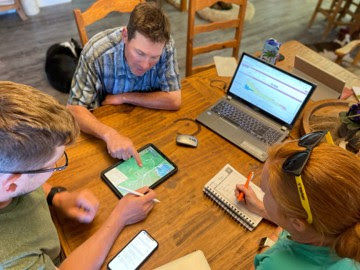
To date, Plateau Cattle Co., has participated in four research trials including DNA sampling to identify genomic evaluations used to refine beef cattle herds for optimum breeding and management, and has new ones on the forecast for fall 2025.
This fall, the ranch is working with Olds College to evaluate a relatively new product called FerAppease, which mimics a natural pheromone found in lactating cows that produces a calming effect on calves. Research shows that when this synthetic version of the pheromone is applied topically to cattle, it produces a calming effect which can last up to 14 days. It reduces stress in cattle, improves handling and may even improve feed efficiency.
Following ranch succession, Plateau Cattle Co. has switched from a longstanding February start to the calving season, to an early April start to hopefully align calving with better weather conditions and best align with Mother Nature. They have also adopted the Sandhill calving system during the calving season which involves moving cow-calf pairs to fresh ground shortly after calves are born. Reducing the concentration of calves and keeping newborns away from older calves helps to reduce the risk of disease development and spread.
Photo Credit: Alberta Beef Producers (Left and Right) and Plateau Cattle Co. (Middle)
This year, they are implementing fence line weaning to further reduce stress on both cows and calves and to best support herd health and the bottom line through to their buyers and value chain partners.
On the environmental side, they’ve also implemented a wide range of management practices to protect and enhance forage, water and wildlife resources. One major move in recent years, as they faced several consecutive years of drought, involved reducing the size of their beef herd from 650 to 450 head.
“With extremely dry growing conditions during the grazing season, grass growth is reduced, and it takes native grasses that have been grazed longer to recover,” says John. “By reducing herd numbers, we are better able to match cattle numbers with the carrying capacity of forages.”
Picture Credit: Paula Campbell (Left and Right) and Alberta Beef Producers (Middle)
On their home place, they have also been working to eliminate annual cropping and have returned all acres to perennial forages. Over the years they have fenced off dugouts as well as riparian areas near natural water sources to keep cattle out of the fragile environment. They are planting vegetation and planning beaver dam analogs (BDAs) structures built to replicate key features and benefits of actual beaver dams to restore and support wetland and riparian areas throughout their ranch.
They’ve also installed off-site solar powered watering systems, which help provide cattle with good quality water. New water developments also help to improve distribution of cattle over extensive range areas.
To protect beneficial insects such as dung beetles, they perform parasite egg counts in fecal material to determine the pest load. That monitoring technique has made it possible to greatly reduce the use of deworming treatments, which are now only used when medically necessary.
With calving starting in April, cow-calf pairs are moved onto summer pasture usually around the May long weekend. Turnout onto native grass community pastures and crown grazing leases is usually delayed until mid-June and early July, respectively. The herd is split into three different groups for the grazing season. Cow-calf pairs are weaned in early October.
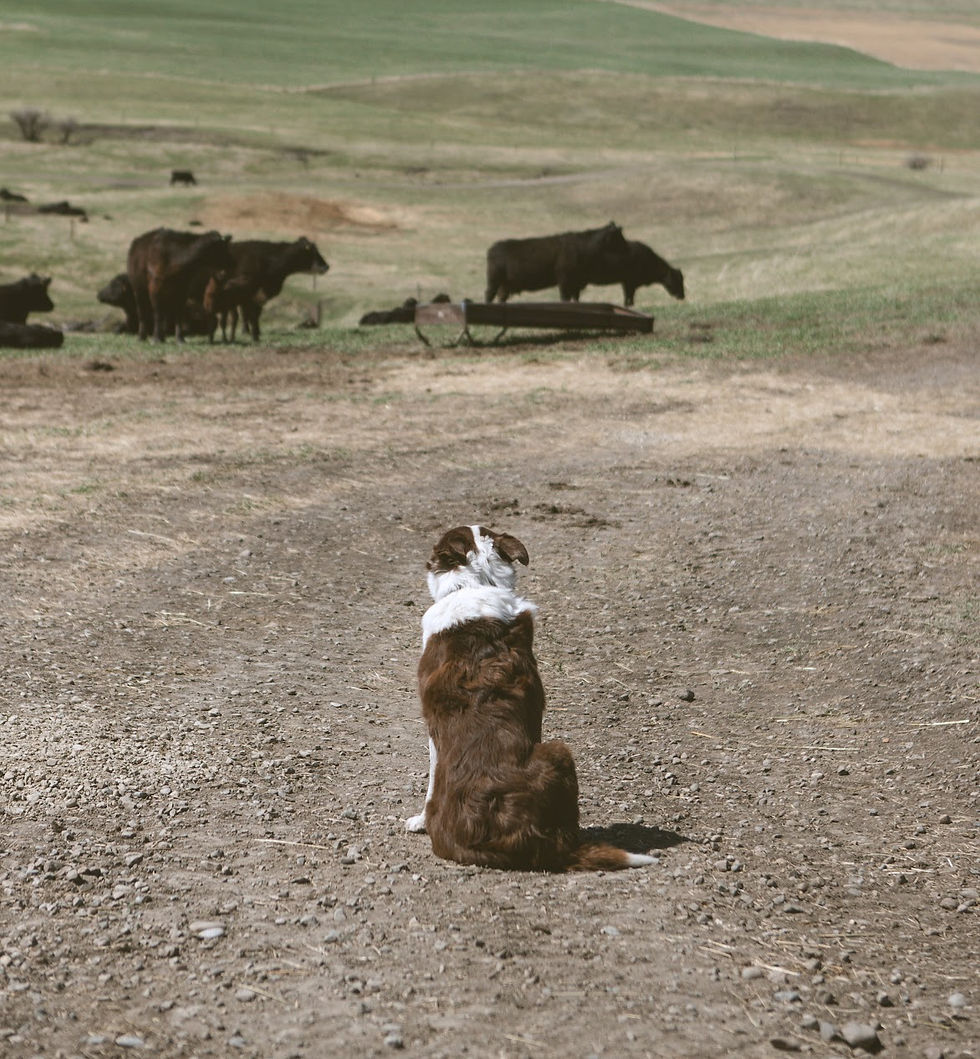
One environmental challenge they weren’t looking for but has occupied a great deal of their time over the past five years, has been a decision by the provincial government to allow resumption of coal mining exploration on the eastern slopes of the Rocky Mountains, specifically one mining proposal which directly affects the Mount Livingstone grazing lands.
“If this project goes ahead, it doesn’t just affect the Livingstone range area,” says Laura. “It will threaten air and water quality for landowners and communities across a wide area of southern Alberta along the eastern slopes.
Working with others, John and Laura have worked tirelessly to raise awareness and advocate for the eastern slopes, and the land, watershed and agriculture. They have educated and raised concern about threats posed by coal developments to the widest possible audience that includes government, beef consumers, urban and rural populations, environmental groups, Canadian and global media, and social influencers. “It is important to make all sectors of society aware of the implications that new coal development will pose to our landscape and watershed.
“As ranchers we are also environmentalists,” says Laura. “In this case, land stewardship on our ranch means standing up for and advocating for our water, native grasslands and sensitive ecosytems. We have an instilled responsibility to protect the environment, water, land, and native grasslands for the next generation, as well as for the sustainability of our beef and agricultural industry”.
For John and Laura, along with hoping for rain, future plans include continuing with efforts to improve overall management efficiency, work to improve herd genetics to optimize beef production, and improve management of forage resources.
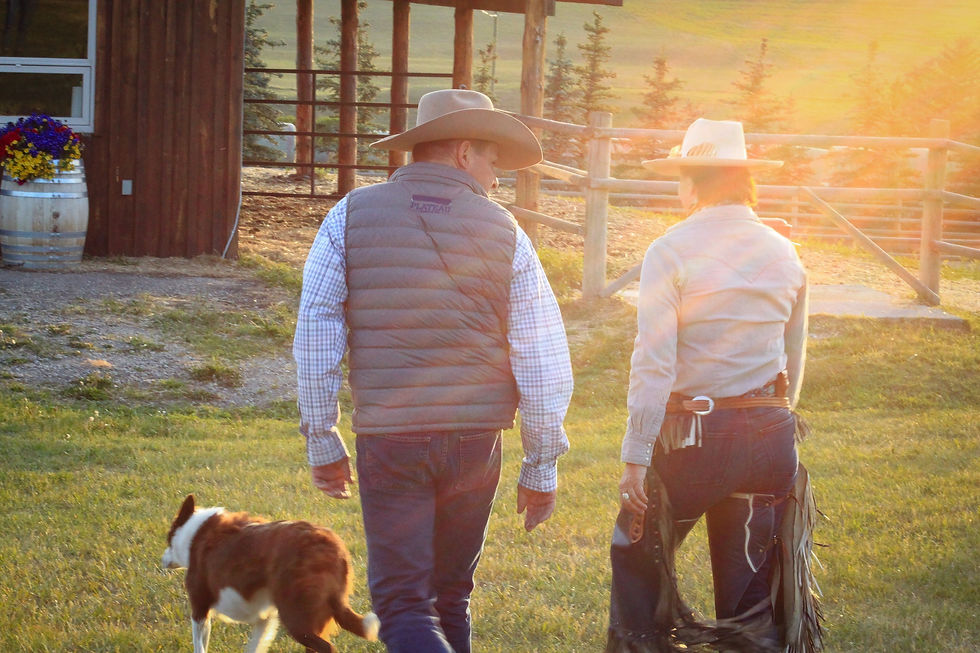
“We are always open to having a look at new production practices and new technology,” says John. “I am really interested in working with Olds College as they study virtual fencing technology. (That’s technology that involves cattle wearing GPS-equipped collars to create virtual boundaries, allowing for remote management of grazing areas without physical fences.)
“It is really exciting technology that will make it possible to improve grazing management by directing cattle into range areas without the need for fencing. And these transponders open the possibility to not only be able to track cattle but also monitor aspects of herd health and performance. It is technology with a great deal of potential.”
“Our goal is to continue our efforts to produce the best quality cattle we can, under low stress and thoughtful production practices, while at the same time protecting and hopefully improving the natural resources, for the next generation which all contributes to a sustainable and profitable beef industry in Canada for the future,” says Laura.
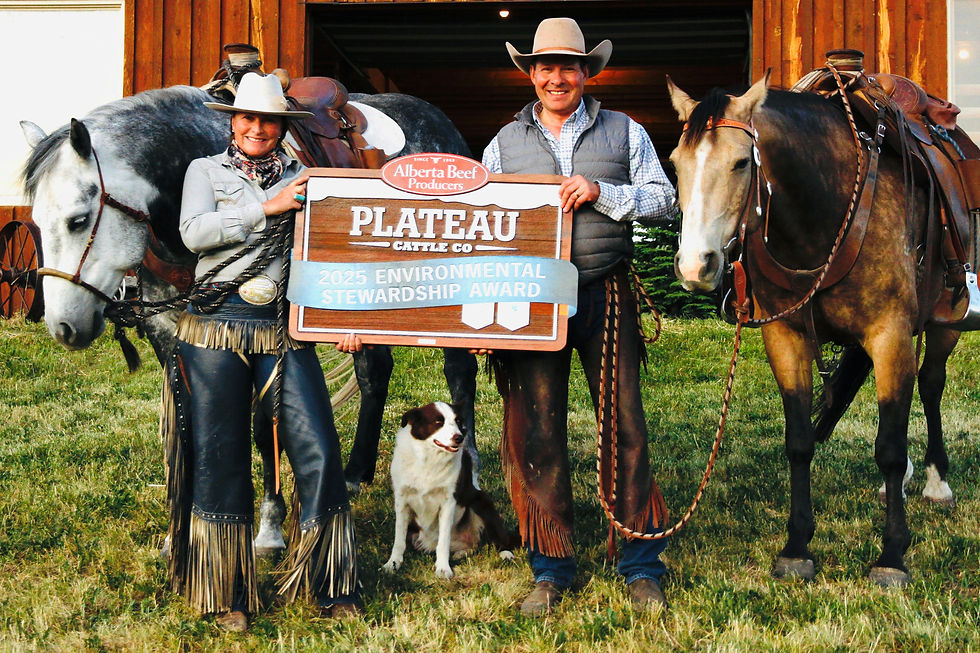



































Comments